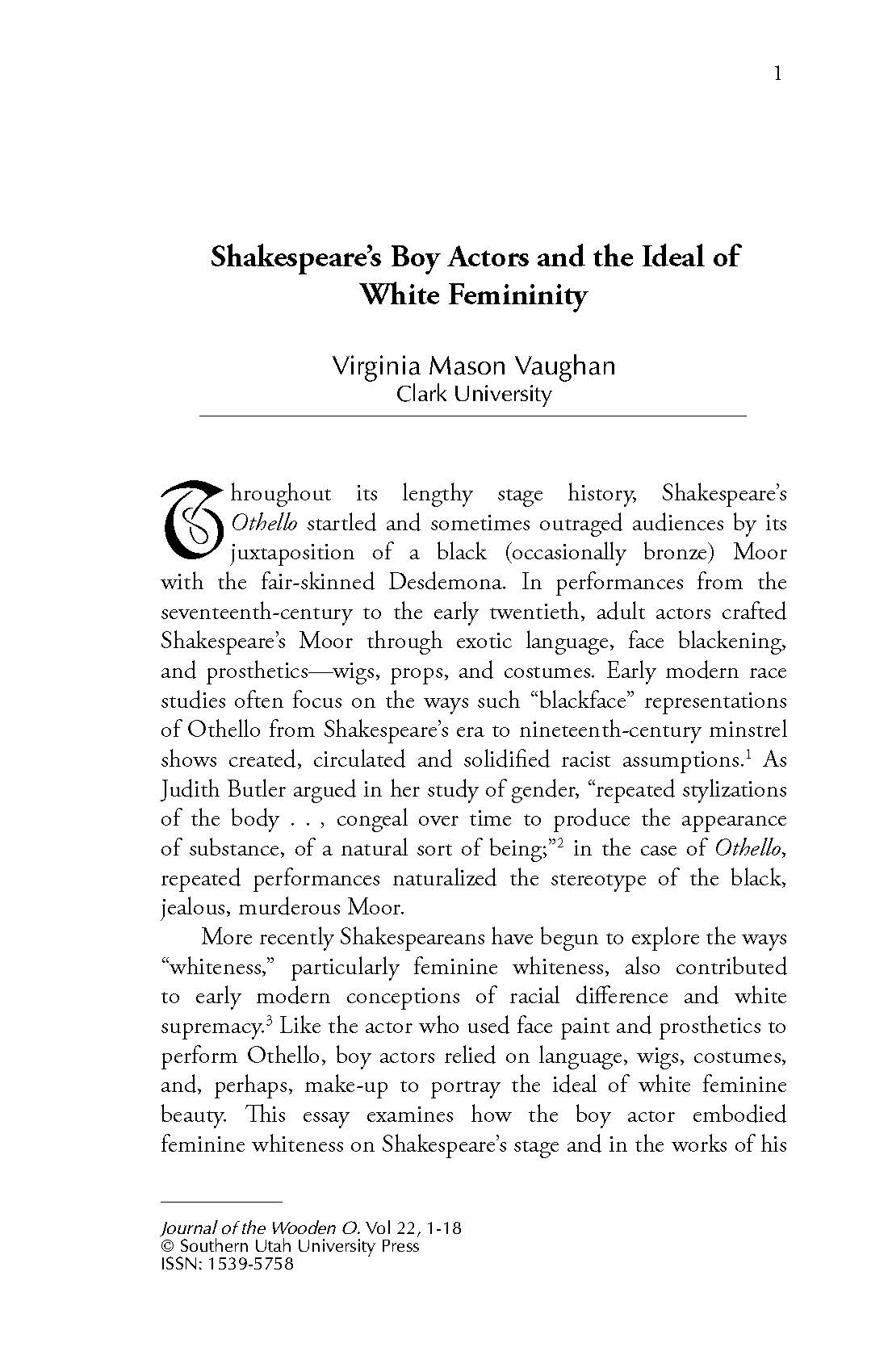Shakespeare's Boy Actors and the Ideal of White Femininity
Main Article Content
Abstract
Throughout its lengthy stage history, Shakespeare’s Othello startled and sometimes outraged audiences by its juxtaposition of a black (occasionally bronze) Moor with the fair-skinned Desdemona. In performances from the seventeenth-century to the early twentieth, adult actors crafted Shakespeare’s Moor through exotic language, face blackening, and prosthetics—wigs, props, and costumes. Early modern race studies often focus on the ways such “blackface” representations of Othello from Shakespeare’s era to nineteenth-century minstrel shows created, circulated and solidified racist assumptions.1 As Judith Butler argued in her study of gender, “repeated stylizations of the body . . , congeal over time to produce the appearance of substance, of a natural sort of being;”2 in the case of Othello, repeated performances naturalized the stereotype of the black, jealous, murderous Moor.
